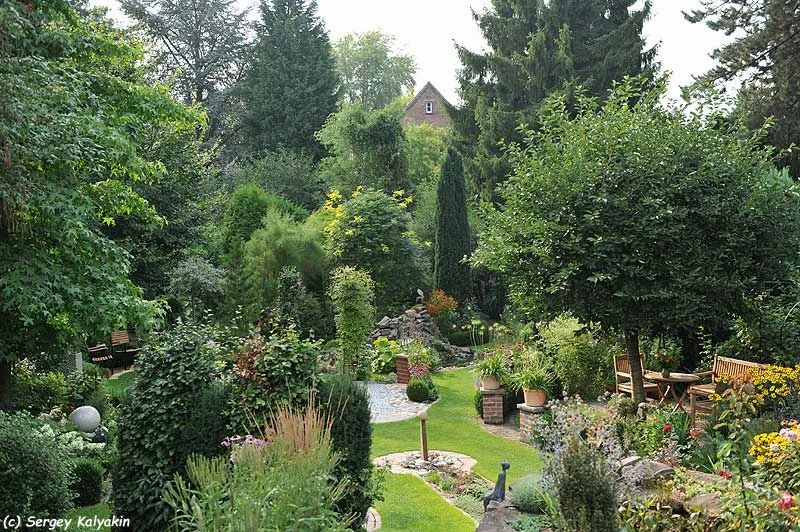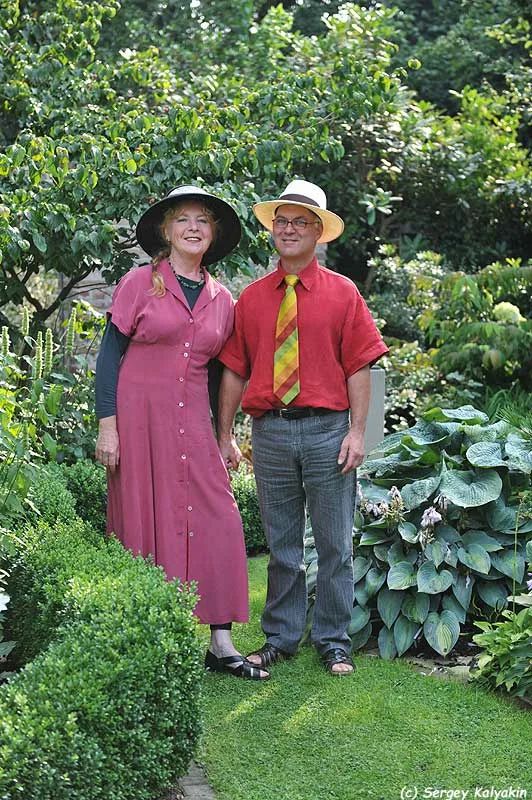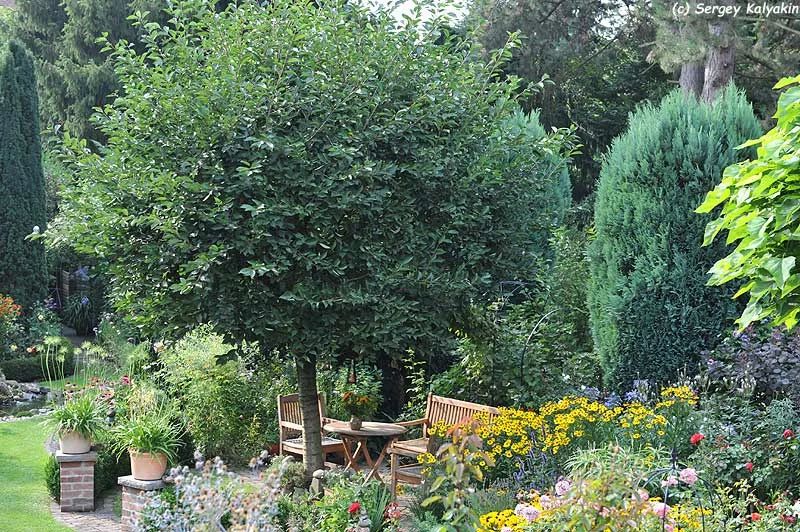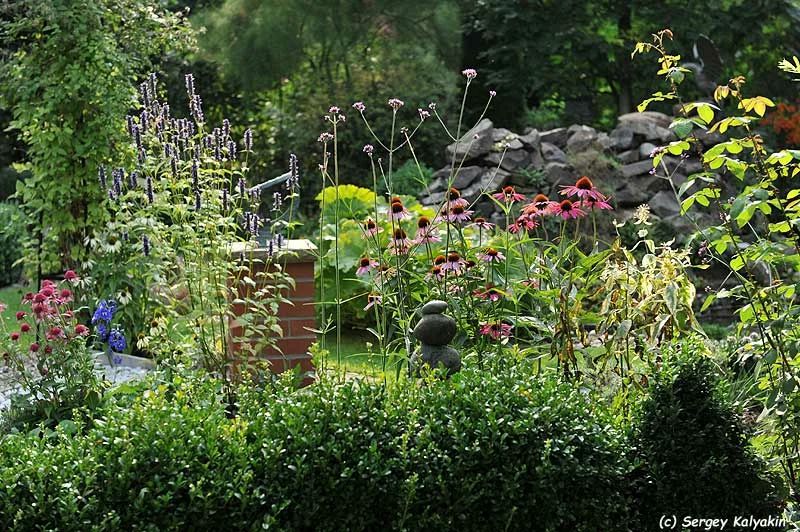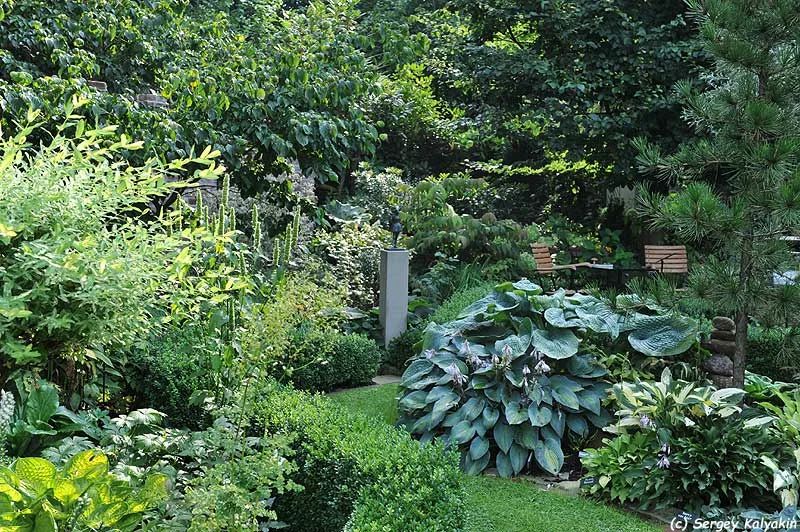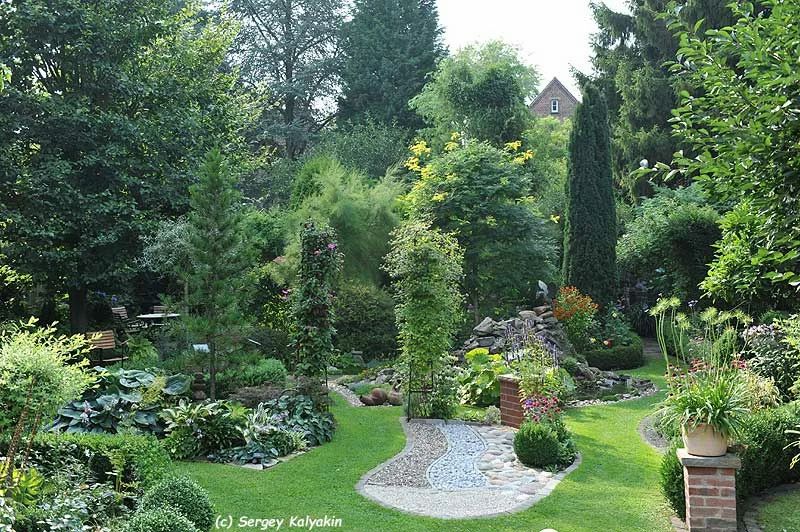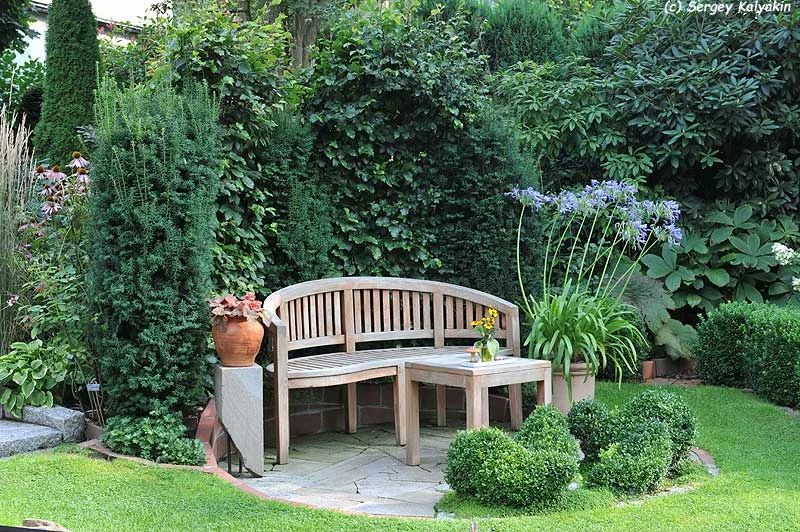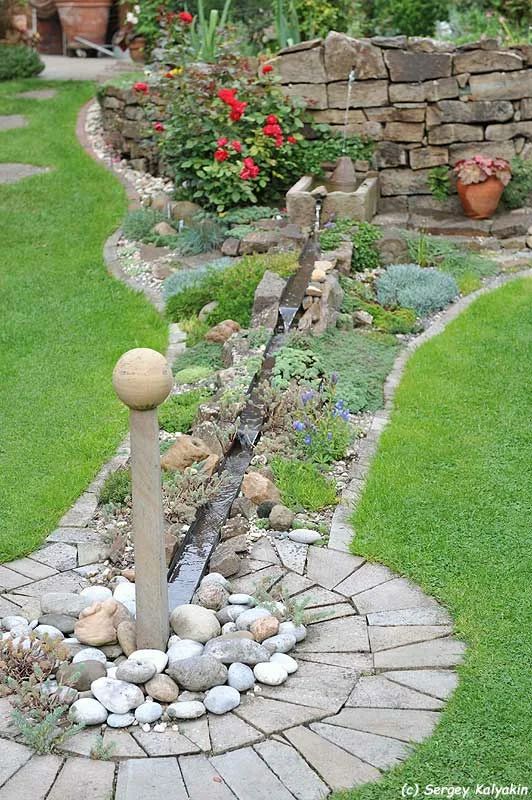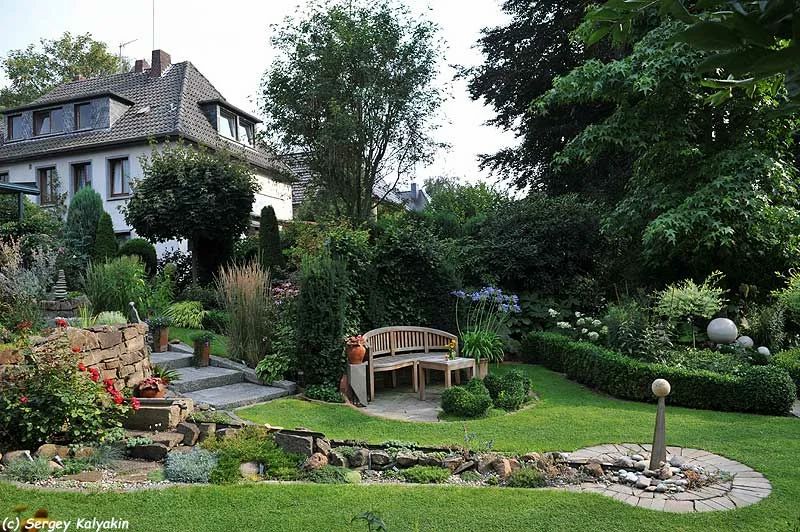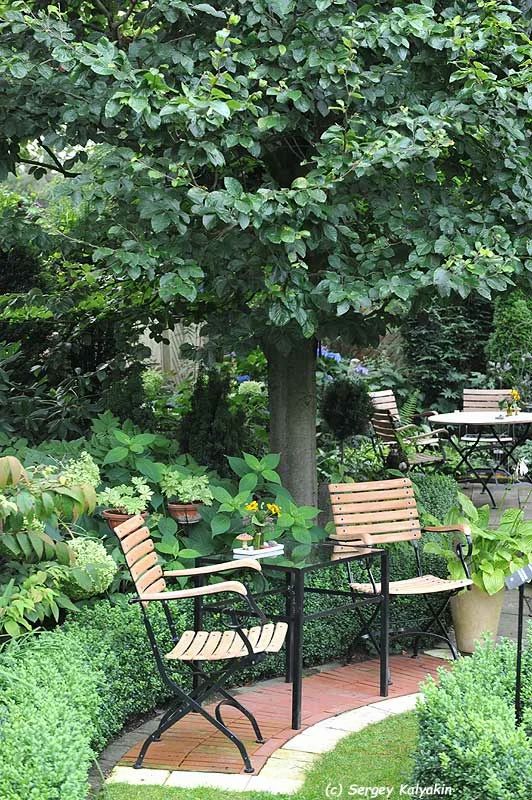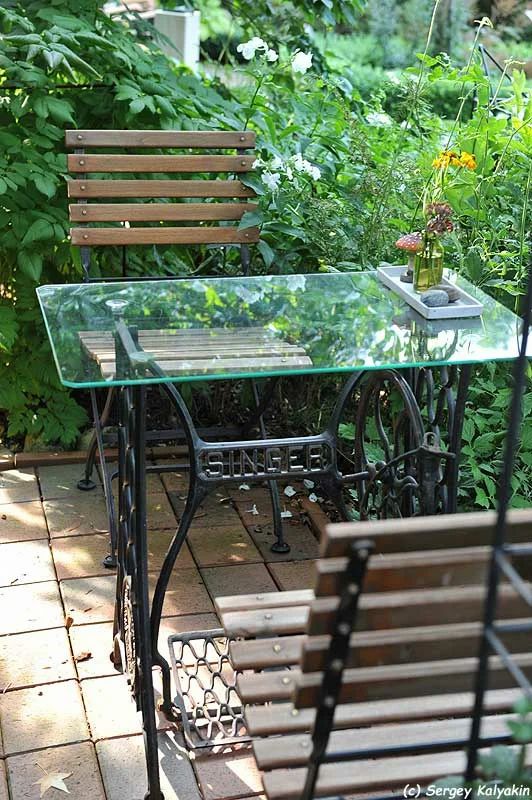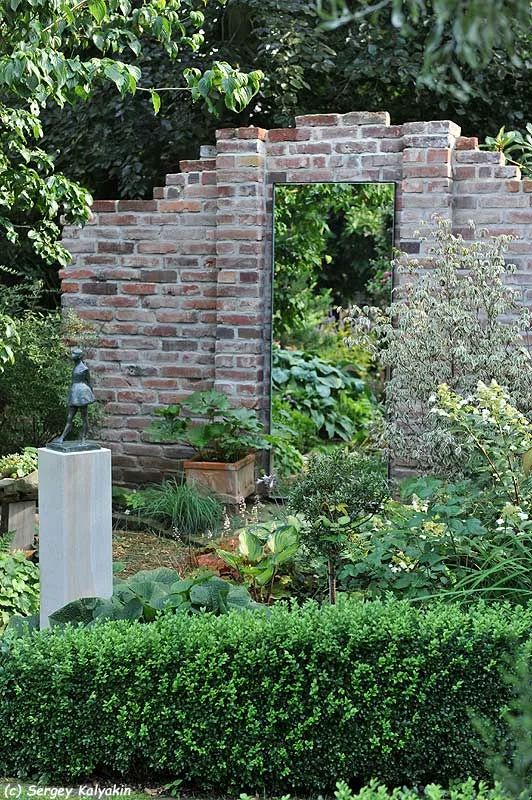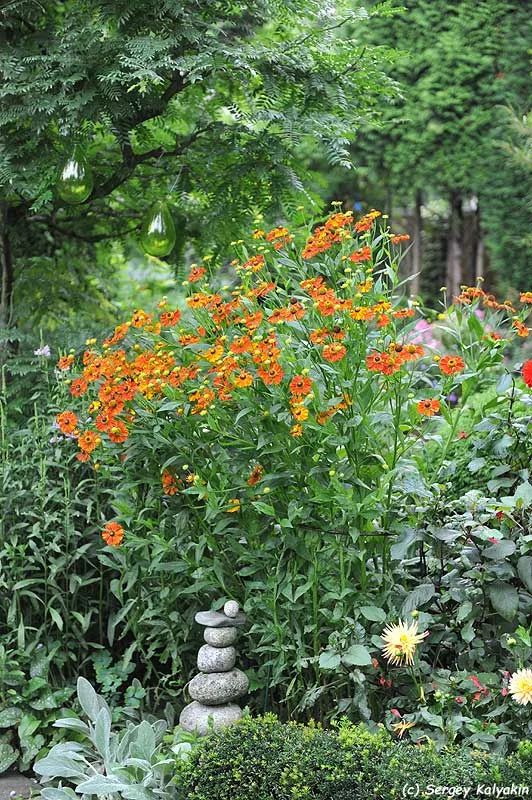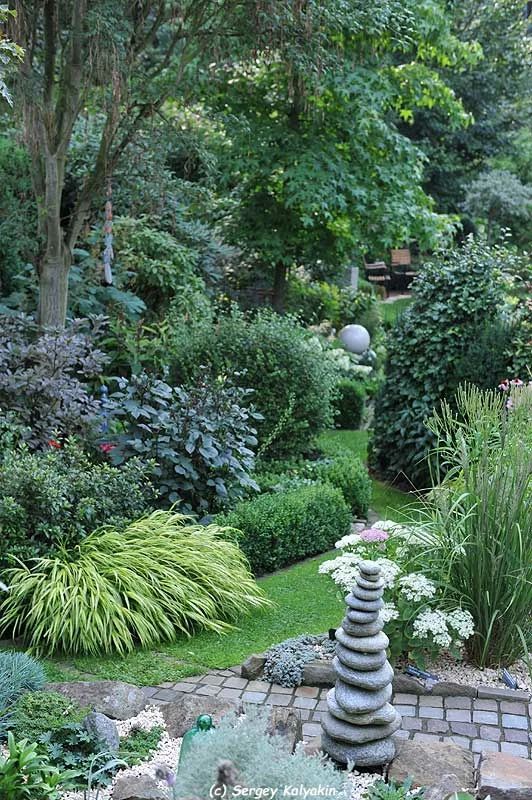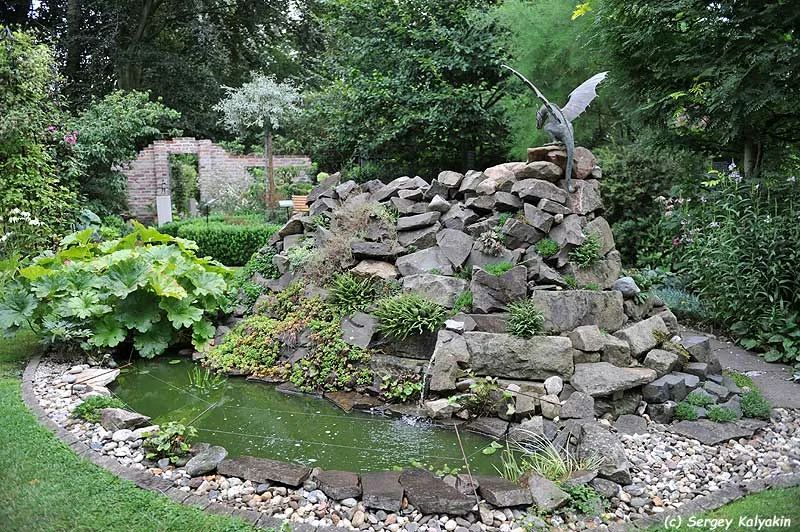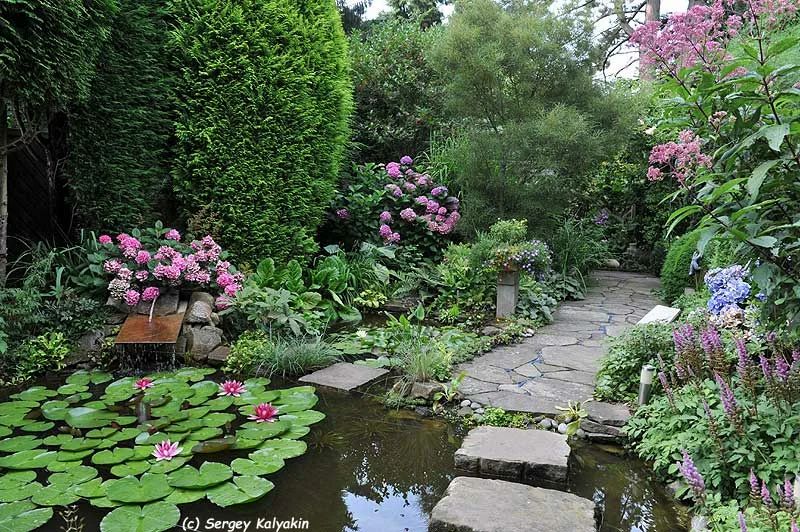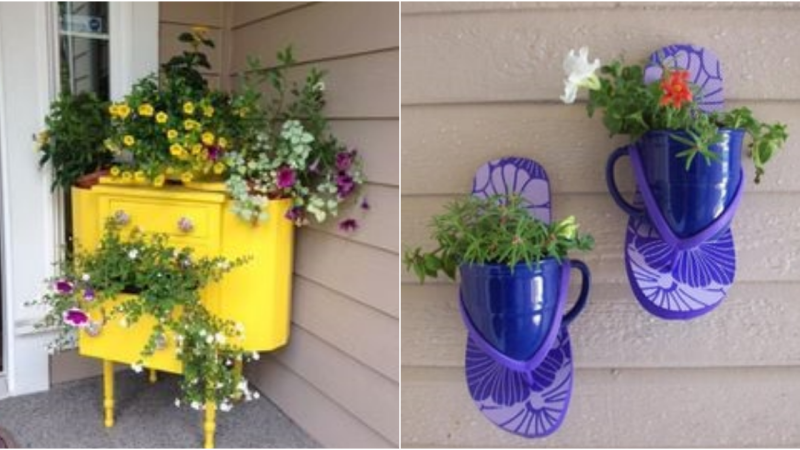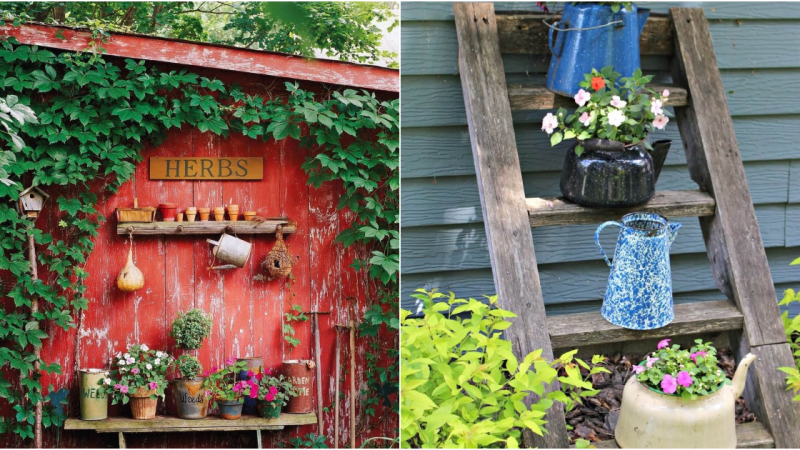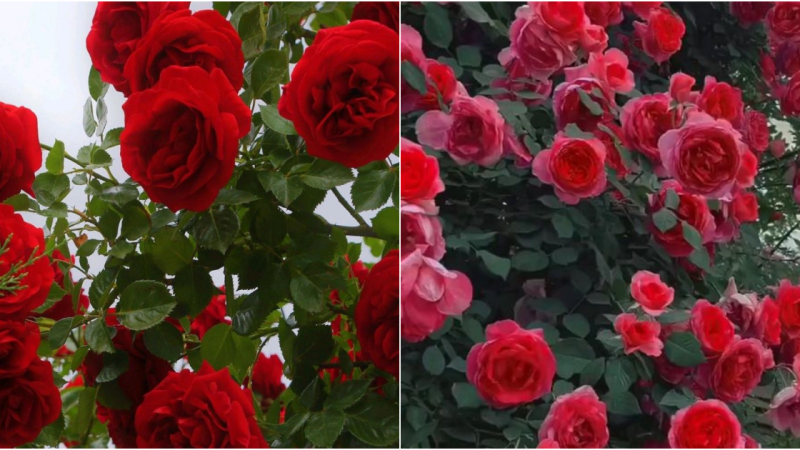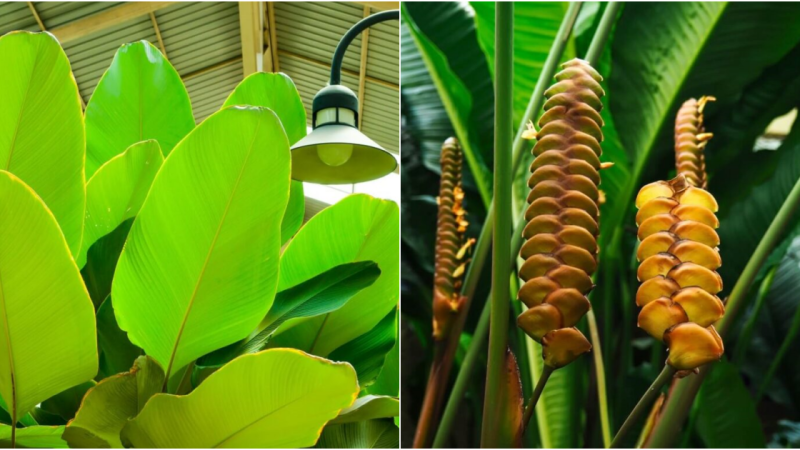German Garden of Feng Shui
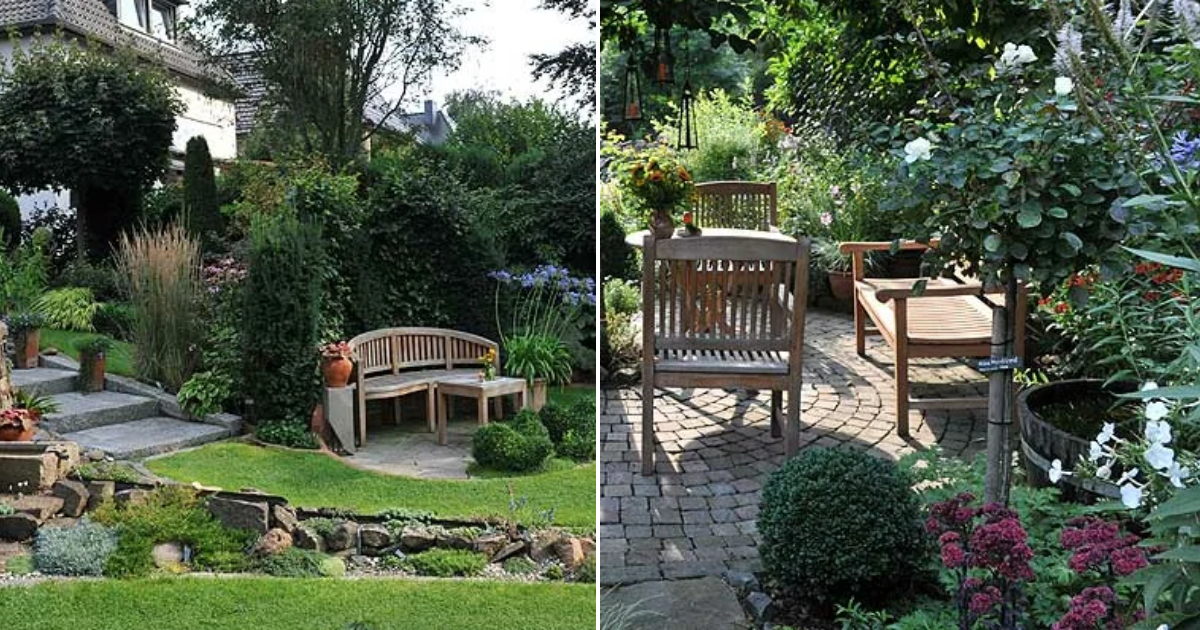
Every year, this private German garden in North Rhine-Westphalia looks different: Vera Evert and Friedemann Knak always find new touches to complement the evolving picture.

Twenty-two years ago, when they first moved into this house with a 10-acre plot, there was a meadow on the slope (a two-meter height difference) and ten firs at the bottom—some of which had to be uprooted.
The couple planned and planted everything themselves, without the help of professional landscapers. They even handled the water and stone work on their own. Everything is arranged according to feng shui principles, but without fanaticism. Vera and Friedemann used this Asian doctrine to achieve harmony in their own garden, taking into account its specific conditions.
Finding a balance of sizes and shapes became an exciting game for them. As a result, the garden is divided into interconnected zones, each corresponding to a specific sector of the bagua grid (love, knowledge, career, etc.). Each zone has its own accents, highlighted by size, color, or texture.
Vera Evert is a graphic designer by profession, and she first encountered feng shui through her work. Before deciding to apply this practice at home and in the garden, she read many books. Vera paints pictures and admits that she loves hearing guests say that she works with plants like a brush and paints.
All plants are chosen according to their specific environmental requirements: sun or shade, dry or humid. Structural plants with large leaves are favored in this garden (which boasts over 1,500 different species and varieties).
No separate space is allocated for the lawn; it serves as pathways instead. Vera explains that according to feng shui, pathways represent the flow of life energy, and the more pathways there are, the better. A person should always have a choice of where to go, which is why this garden has so many forks in the paths (and to tend to the flower beds, one needs unrestricted access to them).
There should be no obstacles in the center of the garden. If the couple had installed an arbor with climbing roses there, it would hinder the free flow of life energy. Therefore, they placed two separate obelisks with clematis instead.
Feng shui allows for different green rooms, isolated but not closed off from one another. Fences are used only for protection from external phenomena (e.g., a living hedge along the perimeter of the garden) or as a backdrop behind benches to shield people sitting and resting.
An example is the green dome behind the bench where the couple rests, enjoying the gentle splashing of water in the stream. It is surrounded by low-growing plants so that it can be seen from any point. According to feng shui, water in the square of the career area (which is how Vera positioned the stream in the garden) always brings positive energy.
However, it should not flow towards the house. Even instinctively, water flowing towards the house evokes unpleasant associations such as flooding, etc. The couple’s house is situated higher up the slope, so everything is harmonious from that perspective.
Furniture, such as chairs and benches, appeared along with the garden landscapes: a new painting meant a new spot to admire it. Sometimes, friends would suggest placing a bench where there is a beautiful view. As a result, there are about thirty “seating areas” in eight parts of the garden.
This means that each sector of the bagua has its own resting place. The most secluded spot is in the shade under the liquidambar tree. Vera inherited an old Singer sewing machine from her grandmother. They turned it into a garden table, replacing the working surface with a glass tabletop. From here, the entire garden is visible, but no one can see you.
By the way, the brick wall nearby is Friedemann’s work. The couple was not very fond of their neighbor’s garden, as it was quite dark. That’s why they decided to create a barrier but also “double” their garden with the help of mirrors embedded in that wall.
Small bronze figurines are placed here and there throughout the garden. Each new figurine is a surprise for Vera. Friedemann secretly buys them without her knowing, and she is left only to be amazed and admire his ability to find suitable places for them.
The “architectural” structures—the stone pyramids—are built by the couple out of sporting interest. The stones are not fastened together. The goal of the game is to build a pyramid and find a beautiful and balanced solution.
They also serve as signposts, another reminder of their family mountain hikes. In the mountains, stone pyramids indicate the continuation of the path. The couple brought all these stones from their travels to Scotland, Spain, Montenegro, and the Alps.
They also have a “large” hill with typical alpine plants. On the south slope, there are drought-tolerant and sun-loving plants, while on the north side, there are ferns, ramonda, and other shade-tolerant perennials.
In the back, damp part of the garden, there are water features. They are just under a meter deep, perfect for water lilies. They are bordered by the “blue room” with blue hydrangeas, which is accessed by a “blue” pathway.
